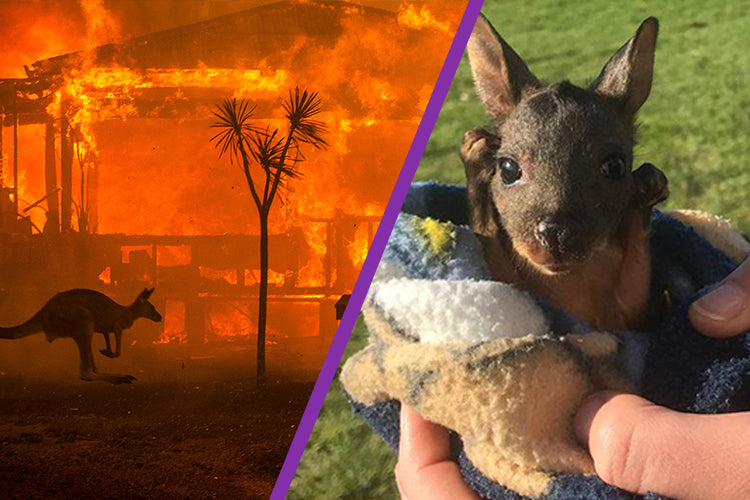
Sewing saves the day - learn how to sew an animal bed for an Australian Rescue Centre
Volunteers around the world are sewing essential items for the wildlife injured and displaced by the current Australian bushfires. Here’s how to get involved.
Although recent storms have brought heavy rain to the worst affected regions of Australia, the bushfire crisis is still far from over and the nation needs help.
Sewers from around the world are banding together to offer their services in a time of need.
So, what can Sewbox visitors do to help?
The situation
Since the bushfires began, numerous animals have been displaced, injured and left without their family members. These include domestic animals but also Koalas, Kangaroos, and even Bats and Sugar Gliders.
Australian rescue group Animal Rescue Craft Guild (ARCG) have encouraged sewing enthusiasts to create a range of items including crochet/knitted toys, animal beds, cat toys, dog coats and blankets. Some are to help animals displaced by fires, some are needed by pounds and other animal rescues.
In response, volunteer donations have been pouring in. Since the call to arms, ARCG membership has soared to nearly 170,000!
As well as the projects already underway, the Guild plan on reaching the following amazing milestones, which YOU can be a part of:
- Supply beds and blankets for every animal in every pound & shelter across Australia.
- Supply rescue kits to first responders and motorists – the goal is every police officer & truck driver in Australia!
What you can do
First, you can keep up to date with news on the situation via the ARCG Facebook Page here.
The above page will guide you on how to make the much-needed items, including instructions and material specifications.
To get started, here’s how to create an Animal bed for use in one of Australia’s Rescue Centres.
Fabrics to use:
The recommended outer fabric to use for these beds is Polar Fleece. It’s essential that the fabric is highly washable and soft. Between the two layers of fabric is a layer of padding - an old duvet or mattress cover would be perfect.
It’s important to note that these fabrics must be synthetic. This allows liquid to drain away from the animal so it remains comfortable.
Size Chart:

Instructions:
Good luck, and make sure to check out the instructional images on the ARCG’s Facebook page if you get stuck!
- Cut out 2 pieces of Polar Fleece about 2CM or 1” larger than the finished sizes above.
- Cut out a piece of padding (mattress cover or similar) about 3CM or 1.5” smaller than the finished sizes above.
- Pin the 2 pieces of Polar Fleece together with right sides facing in and sew along the two long edges and one short edge. Then, turn inside out so the seam is on the inside.
- Stuff the Polar Fleece pouch with the stuffing and flatten out carefully. Fold over the open end to hide raw edges and pin.
- Sew open end closed and continue around the entire bed.
- Sew a circle or curved rectangle on the inside of the bed to ‘lock down’ the padding with the outer fabric. This shape should be about 2/3 the size of the whole bed to best stabilise the padding with the fabric.
- Trim all edges.
